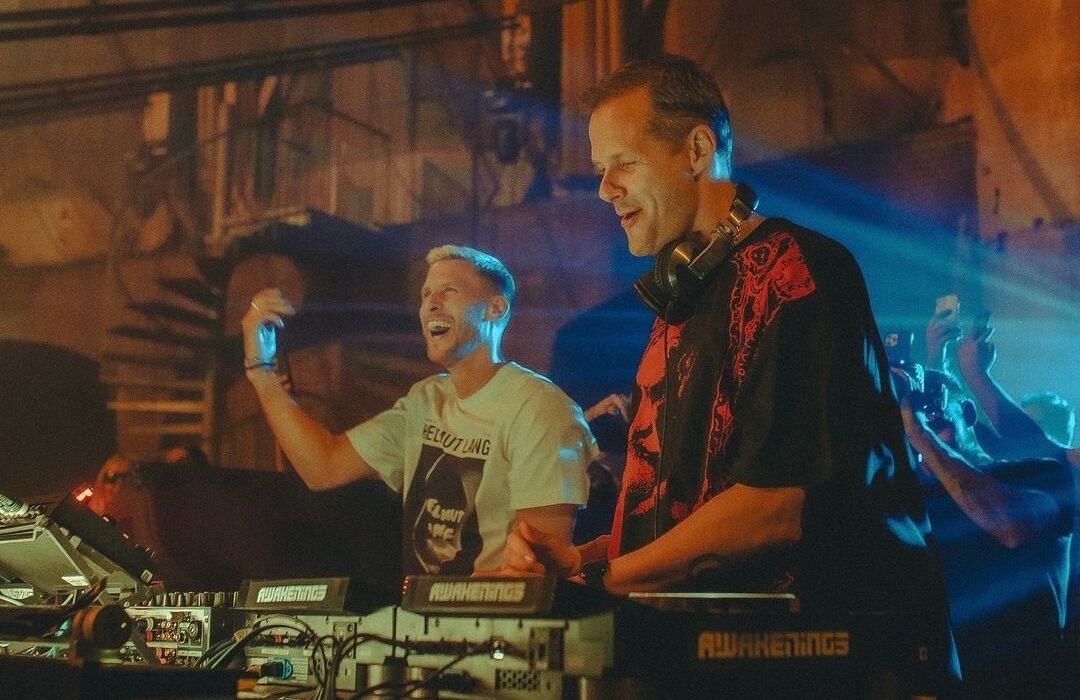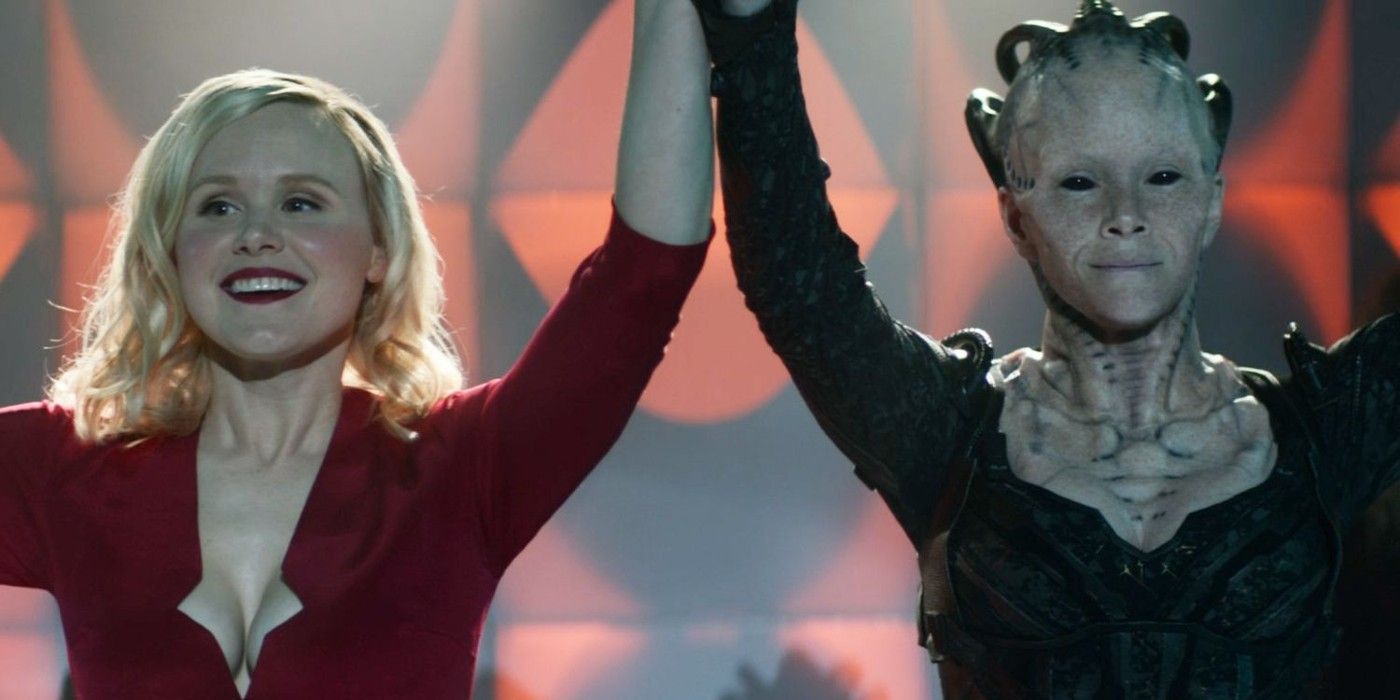The following contains spoilers for the Star Trek: Picard Season 2 finale on Paramount+.
Poor Jean-Luc Picard. He can’t get away from the Borg no matter how hard he tries. In Star Trek: Picard Season 2, the Borg Queen, played by Annie Wersching, has a central role working with and against the heroes. Yet, she is paired with Allison Pill’s Dr. Agnes Jurati, as the two face off for control of Jurati’s body. Meanwhile, fans are starting to draw connections to the mysterious masked Borg Queen in the Picard Season 2 premiere. With all the answers revealed, it means that the most dreaded and evil Star Trek villains will never be the same again.
When Picard and company are whisked back to the moment from the Season 2 premiere, the more clever than observant Admiral figures it out. He realizes that Jurati is the masked Borg Queen on the bridge of the USS Stargazer. She unmasks, revealing Jurati’s face, a real mind-bender for the other officers on the deck, because both Captain Rios and Dr. Jurati just disappeared without explanation. Like those crew members will eventually do, let’s peel back the layers on this time-travel onion to figure out how all this happened.
The time-travel rules during this season are a little loosey-goosey. The timeline was corrupted, and it appears Q planned for Picard to end up there instead of self-destructing with the Stargazer. Changes in the past were evident, since young Guinan did not recognize Picard, meaning The Next Generation episode, “Time’s Arrow,” never took place. Yet, when they returned to the future, Guinan remembered Picard’s visit and knew Rios in the past. All we can do is guess that Borg Queen Jurati went into space; while over in the Delta Quadrant, the Borg Queen of the past was off doing her thing with the Collective. At least, until Captain Janeway decimated them while getting Voyager home in another time-travel Trek adventure.
Wersching’s Borg Queen was also from the corrupted future, but even though she was aware of a “change” in the timeline, she was not part of what was happening on the bridge of the Stargazer. In truth, beyond “get free” and “assimilate,” the Borg Queen didn’t have much motivation for what she did. For example, helping Dr. Soong with this plot only ensured the future where she was captured and the Collective was destroyed. Fans learn why she didn’t care about that in a later scene in which Agnes finally accepts that she is now and forever Borg.
The Borg have an awareness about changes in time and dimensions that’s left vague by the storytellers. Agnes taps into this awareness to show the Borg Queen that no matter what she does, the Borg end up destroyed. Whether it’s because of a plucky Starfleet captain trying to get her ship home or an alt-timeline version of Starfleet eradicating them, the Borg always lose. They lose, it seems, even in the brief glimpses of timelines where the Borg seem to win, like in The Next Generation episode, “Parallels.” So, Agnes makes a pitch to change what it means to be Borg. Because inside the Borg Queen’s head, Jurati discovered a tragic truth about these Trek villains: for all their hivemind connection, the Borg Queen still feels lonely. It’s a subtle suggestion that part of what makes companionship special is that it's two individuals choosing to be together.
Again, fans have to just assume that all the Borg stories seen through The Next Generation era of films happened as depicted. Whether Borg Queen Juarti was working in another timeline, or just a different sector of the galaxy, is something fans can debate for years to come. What matters is that she seems to have started a new kind of collective. The first sign that it’s not your grandfather’s Borg is the unique design of her ship. Instead of the simple cubes of the past, Borg Queen Jurati’s vessel has a central core with 10 “arms” reaching out to the galaxy at large.
As Agnes put it in the penultimate episode of Picard, instead of “assimilation,” the Borg can offer “salvation.” The first example is how the Borg Queen, through Jurati’s influence, used her abilities to heal a dying Seven of Nine. Then she took the group of mercenaries, assimilated by the Queen but not fully Borg-ed out, off into space to chart a new course for the species. Much can be inferred from this, particularly that resistance is no longer “futile,” but part of a standard choice. Given what we know about human nature, it’s not a stretch to think that people -- especially those suffering from hopelessness or loneliness -- might choose to join the collective willingly.
What would a Borg that is part hivemind and part collective of individuals even look like? How might it work? Fans may have to wait until Star Trek: Picard Season 3 to find the answer. At the end of Season 2, the Borg are members of the Federation -- provisionally, it seems, but nonetheless a huge deal. There's grumbling that Star Trek: Picard doesn’t feel like the Star Trek of old (at least not in the way Strange New Worlds does). Yet, bringing an enemy like the Borg into the Federation, even provisionally, feels like the culmination of what Star Trek is supposed to be about. There is no species or civilization beyond redemption, not even the Borg.
You can assimilate the great performances in Star Trek: Picard Season 2 by streaming it on Paramount+.




-1.jpg)
